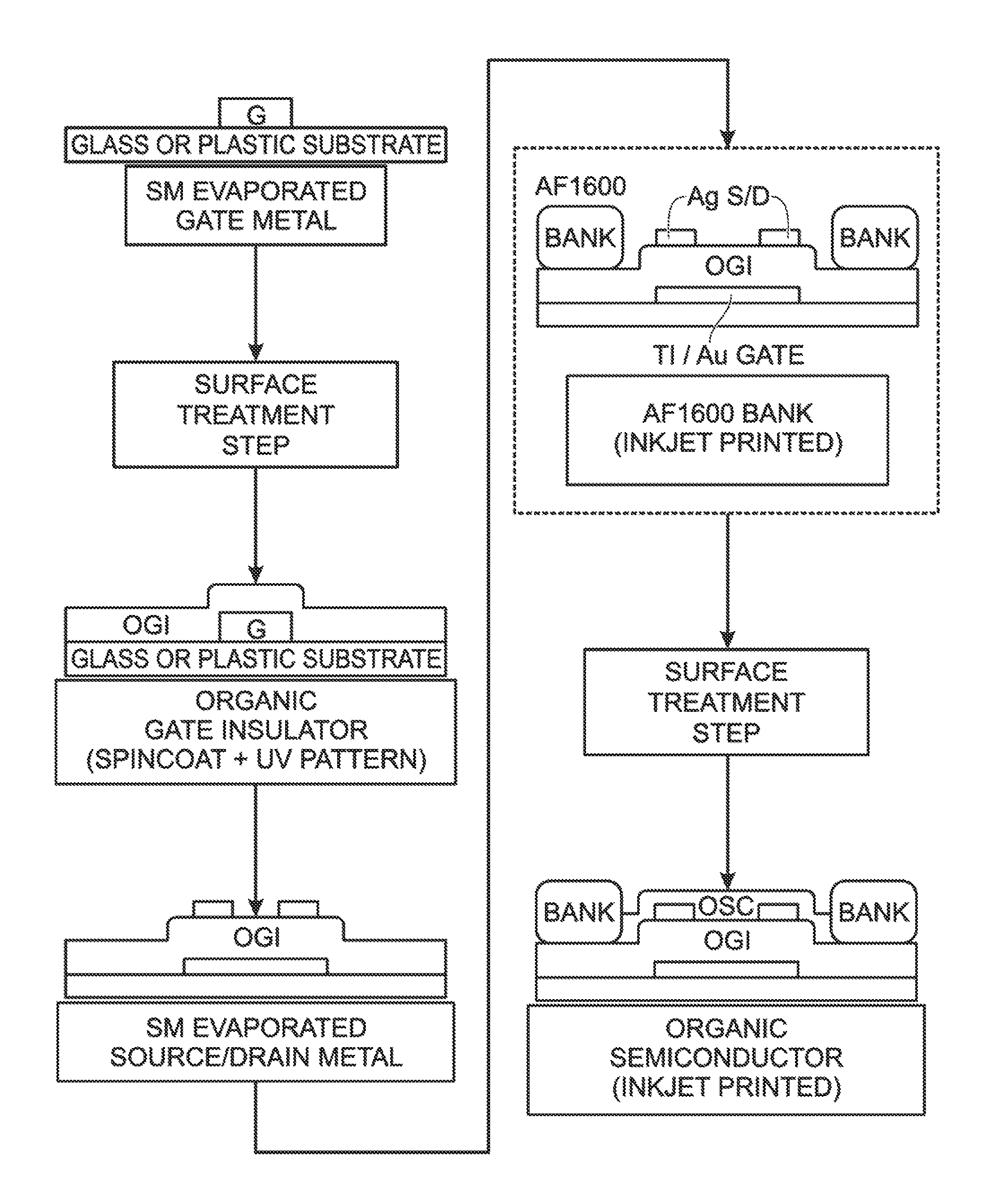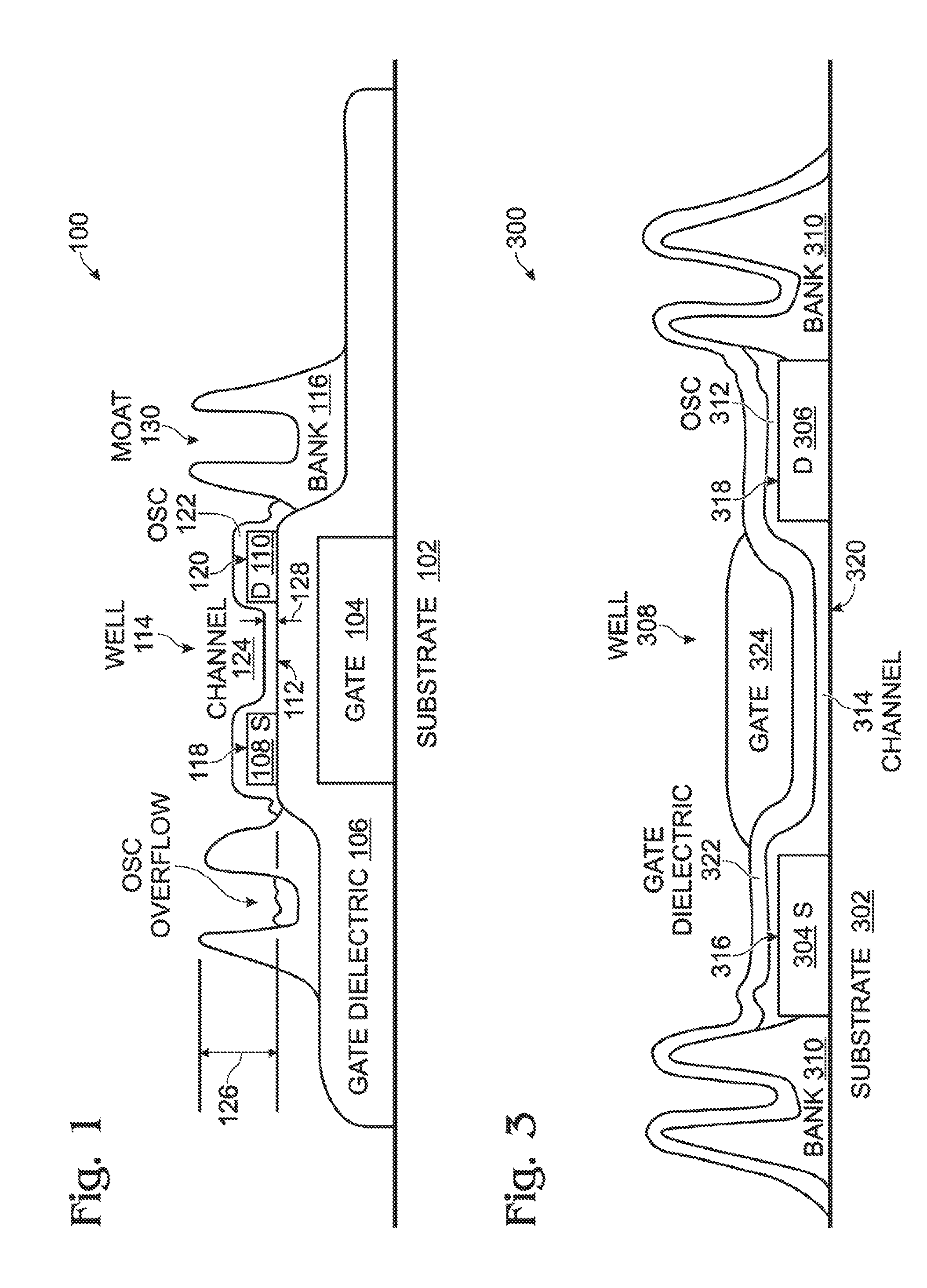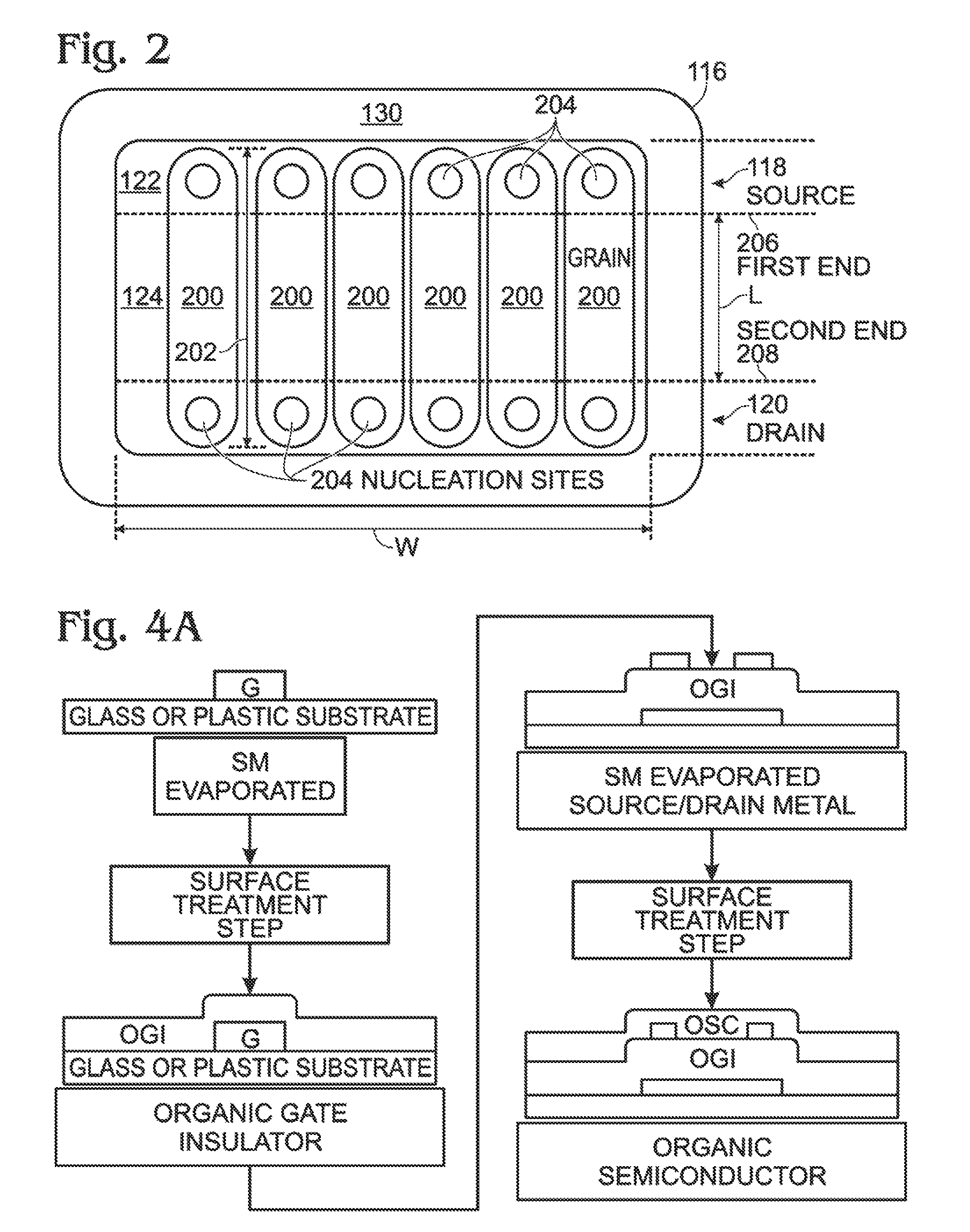Organic transistor with fluropolymer banked crystallization well
a fluropolymer and organic transistor technology, applied in the field of integrated circuit (ic) fabrication, can solve the problems of inability to form orthogonal geometries, inability to uniformly grow grains in channels, and varying grain size, and achieves good solvent orthogonality, simple and effective, and large surface energy contrast
- Summary
- Abstract
- Description
- Claims
- Application Information
AI Technical Summary
Benefits of technology
Problems solved by technology
Method used
Image
Examples
Embodiment Construction
[0028]FIG. 1 is a partial cross-sectional view of a bottom gate organic thin film transistor (OTFT) with a fluropolymer banked crystallization well. The bottom gate OTFT 100 comprises a substrate 102 made from a quartz, glass, plastic, or semiconductor material. A gate electrode 104 overlies the substrate 102, made from a metal or doped semiconductor material. A gate dielectric 106 overlies the gate electrode 104, typically made from an oxide, nitride, or organic gate insulator. A source (S) electrode 108 and a drain (D) electrode 110 overlie the gate dielectric 106, exposing a gate dielectric channel interface region 112 between the S / D electrodes. Typically, the source 108 and drain 110 electrodes are a metal. A well 114 with fluropolymer containment and crystallization banks 116 forms a print area surrounding the gate dielectric channel interface, and at least a portion of the source 108 and drain 110 electrodes. The print area is defined as the gate dielectric channel interface ...
PUM
 Login to View More
Login to View More Abstract
Description
Claims
Application Information
 Login to View More
Login to View More - R&D
- Intellectual Property
- Life Sciences
- Materials
- Tech Scout
- Unparalleled Data Quality
- Higher Quality Content
- 60% Fewer Hallucinations
Browse by: Latest US Patents, China's latest patents, Technical Efficacy Thesaurus, Application Domain, Technology Topic, Popular Technical Reports.
© 2025 PatSnap. All rights reserved.Legal|Privacy policy|Modern Slavery Act Transparency Statement|Sitemap|About US| Contact US: help@patsnap.com



